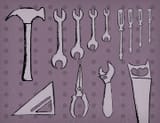
7 Alternatives to Popular Web Typefaces for Better Performance
It’s no secret designers love typefaces. Web design is 95% typography, and it’s hailed as the most important aspect of a design. So, it’s imperative to find typefaces that accurately convey the voice of our words. Designers may not be always thinking about it, but how a site performs can be as important as choosing the right typeface. The weight of a font kit is arguably more important to a site’s performance versus other heavy hitters (like images), because fonts are loaded on every single page. And, after all, if a site loads too slowly, users won’t view the typography as you’ve intended!








